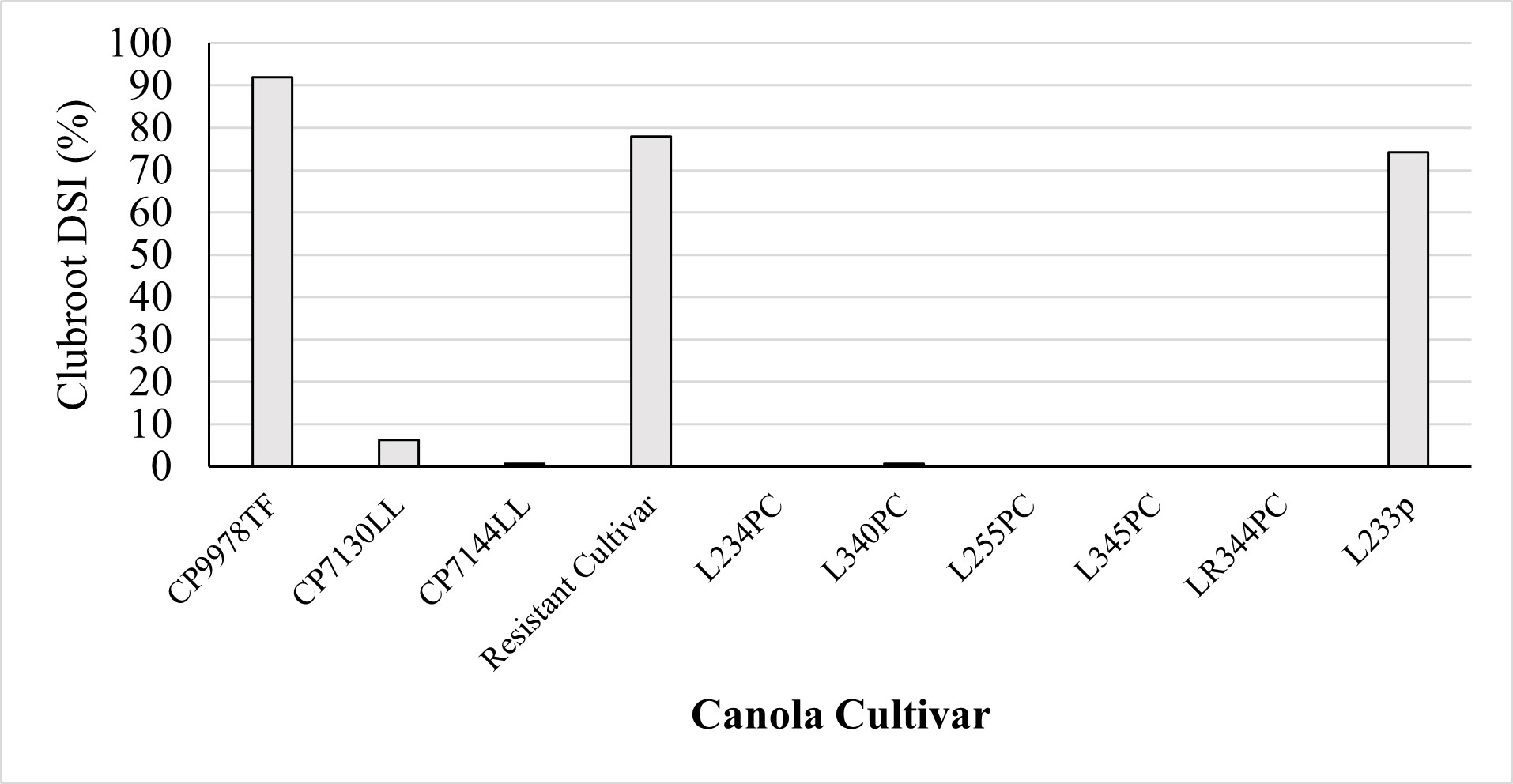Results: Clubroot susceptible cultivars InVigor L233P and CP9978TF were used as reference checks to compare the clubroot resistance showed 74 and 92 percent of DSI, respectively, indicating the validity of the trial. Canola cultivars CP7130LL, CP7144LL, InVigor L234PC, InVigor L340PC, InVigor L255PC, InVigor L345PC, and InVigor LR344PC, showed resistance to clubroot and were significantly different from the other cultivars tested. A clubroot resistant cultivar showed high clubroot DSI (78%) indicating the resistance breakdown to clubroot. However, the trial has to be repeated to confirm the resistance breakdown.
Future research: Screening large numbers of commercial cultivars of canola will be helpful to growers. Monitoring clubroot resistance breakdown in commercially available resistant cultivars each year will be a crucial survey objective.
Canola Council of Canada’s Monitoring Clubroot in Resistant Varieties
“Growers using clubroot-resistant cultivars in clubroot-infested fields may experience some infected plants, which can be attributed to susceptible volunteers and off-types. Volunteer canola seed can germinate many years after it was last grown, and if this comes from a susceptible canola crop, then the volunteers will be susceptible. Off-types are a normal part of hybrid canola production – no canola hybrid is 100% pure, so there may be a small proportion (1 to 4%) of the seed that is susceptible.
When scouting, if more than 10% of seeded plants (do not count volunteers) are infected, that may indicate that the clubroot resistance is no longer functional against the pathogen population in the field. These infected plants may be restricted to a small patch which indicates a recent pathogen change.”
Ideal Recommendation: Practice longer crop rotations in clubroot endemic areas and use a clubroot resistant variety every three years minimum.
